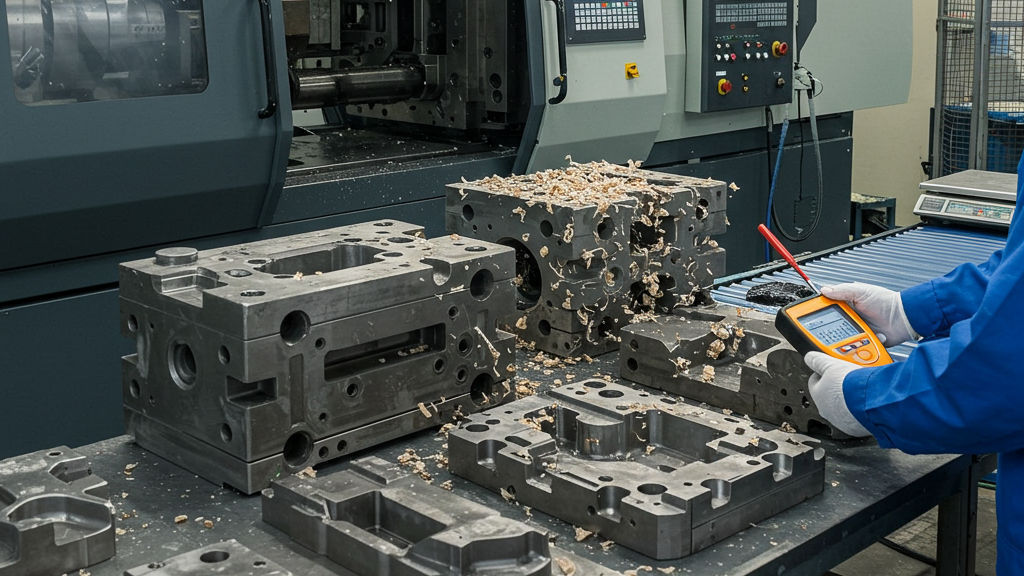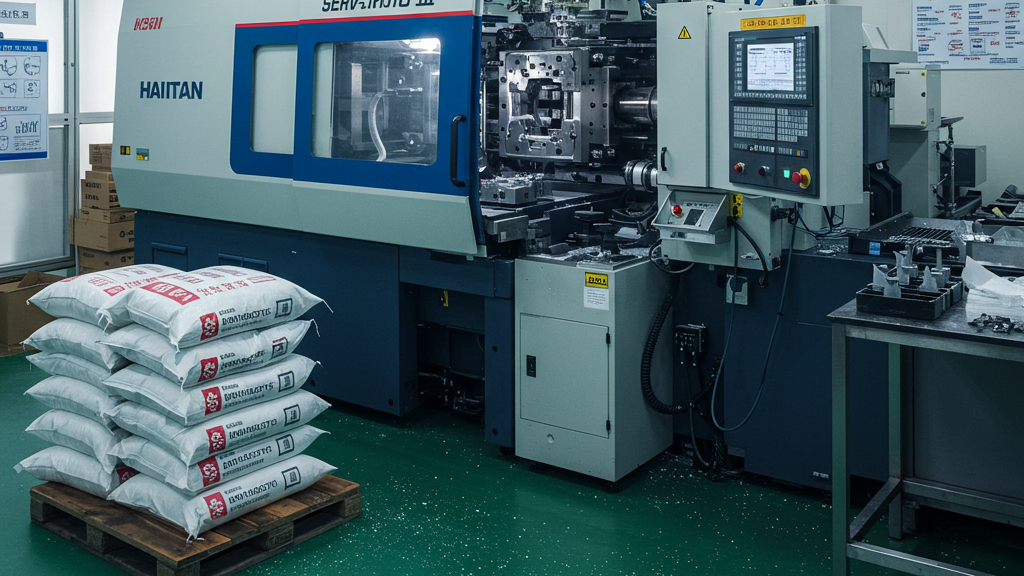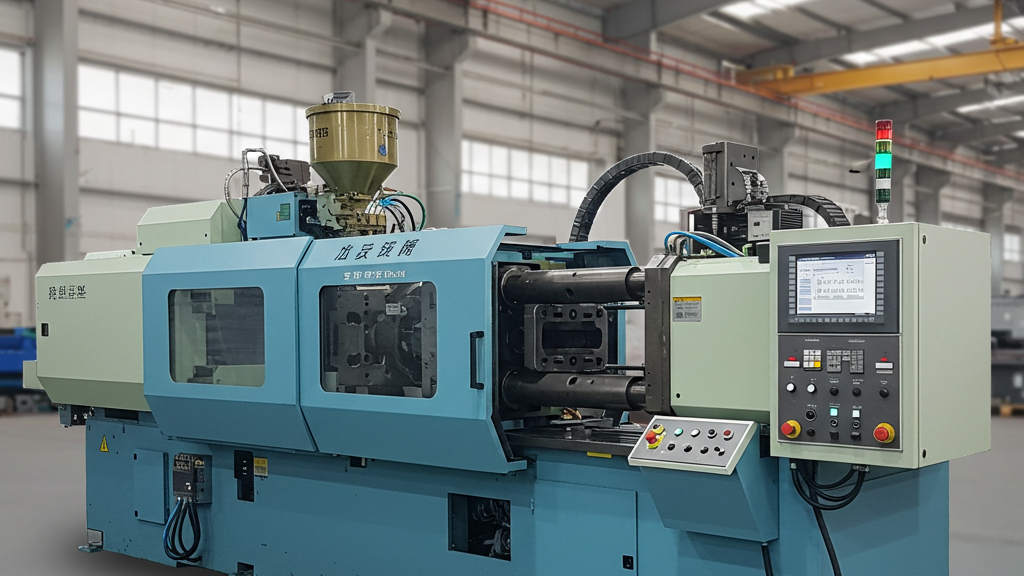
In ABS injection molding, static electricity is far from a minor issue. It directly affects the conveying of raw materials and their flowability in the hopper. Improper static electricity can even lead to inaccurate metering, affecting the uniformity of the mixture. Therefore, recognizing the critical role of static electricity at the initial stage of injection molding is essential. Effective management of static electricity is a prerequisite for ensuring smooth production and stable product quality.
Previously, we emphasized the impact of static electricity on the front end of injection molding. However, when molten ABS enters the cavity, the effects of static electricity do not disappear. It acts on the melt flow and the interaction with the cavity walls, and even affects the demolding and surface quality of the final product. Therefore, static electricity control throughout the entire injection molding process, especially the management during the molding stage, is equally critical.
How Does Static Electricity Affect ABS Material Handling?

The starting point of ABS injection molding lies in the proper handling of raw materials. However, the seemingly subtle phenomenon of static electricity can play a significant role at this stage, directly influencing the “every move” of ABS particles.
- Dust Adsorption and Contamination: Static electricity acts like a magnet, attracting dust and impurities, thus contaminating the raw materials.
- Particle Agglomeration and Bridging: Static electricity causes ABS particles to agglomerate and form bridges, hindering smooth material flow.
- Impact on Metering Accuracy: Unstable material flow can affect the metering accuracy of injection molding.
- Increased Operational Difficulty: Charged particles can increase operational difficulty and inconvenience.
How Does Static Electricity Affect ABS Melt Molding?

When the hot ABS melt is injected into the cold mold, the change in physical state is not the end of the story. The potential impact of static electricity still exists, and it may subtly shape the “inner” and “outer” aspects of the final molded product at a microscopic level.
- Influence on Melt Flow: Static electricity may subtly alter the melt flow, leading to uneven filling.
- Influence on Mold Wall Interaction: Static electricity may affect the interaction between the melt and the mold walls, impacting surface finish and demolding.
- Influence on Cooling Crystallization: Static electricity may microscopically influence cooling crystallization, thereby affecting mechanical properties.
- Potential Surface Defects: Static electricity may cause the surface to adsorb microparticles or form microscopic texture differences.
What Problems Can Uncontrolled Static Electricity Cause?

Allowing static electricity to “wreak havoc” in the ABS injection molding process is not a wise move. From reduced production efficiency to impaired final product quality, uncontrolled static electricity can trigger a series of challenging problems.
- Unstable Metering: Unstable material flow affects metering accuracy, leading to fluctuations in product dimensions and weight.
- Difficult Demolding: Static electricity may increase the adhesion between the melt and the mold, leading to difficult demolding.
- Uneven Surface: Static electricity may affect adhesion, resulting in uneven surface texture or gloss.
- Uneven Internal Stress: Indirect effects may lead to uneven distribution of internal stress, affecting performance.
Influence of static electricity on ABS injection molding
|
Impact Stage |
Specific Impact |
Potential Production Issues |
Potential Product Defects |
| Raw Material Handling | Particle dust attraction, agglomeration | Feeding difficulties, unstable metering | Raw material contamination, dimensional variations |
| Melt Filling | Affecting melt flow, mold wall interaction | Poor filling, demolding issues | Surface defects, poor finish |
| Operation Process | Particle adhesion to equipment, inconvenience | Increased cleaning, operator discomfort | |
| Product Quality | Potentially affecting cooling, surface particle attraction | Uneven internal stress, surface contamination |
Effective Methods for Static Electricity Elimination in ABS Injection Molding
In ABS injection molding production, the industry has developed various effective solutions to address the many problems caused by static electricity. Reducing the generation of static electricity at the source, and promptly neutralizing or eliminating the generated charges during the process, are both key.
1.Material Modification: Material modification reduces static electricity generation at the source by adding antistatic agents or using antistatic ABS.
2.Equipment and Environmental Control: Grounding equipment, using static eliminators, controlling humidity, and using antistatic facilities suppress static electricity accumulation in many ways.
3.Process Optimization: Optimizing the injection molding process and selecting appropriate auxiliary materials aim to reduce triboelectric generation during production.
4.Comprehensive Prevention and Control: Combining measures in materials, equipment, environment, and processes achieves more comprehensive static electricity control.
Conclusion
It is crucial to take comprehensive and effective measures to eliminate static electricity. By combining material modification, equipment and environmental control, process optimization, and multifaceted prevention and control, the negative impact of static electricity can be significantly reduced, ensuring the stable and efficient production of ABS injection molding and the reliability of product quality. Paying attention to and properly addressing static electricity issues in ABS injection molding is a key step in achieving high-quality, high-efficiency production.
For expert assistance in implementing for your production needs, visit our resource center or contact us. Let’s help you scale up your manufacturing with precision and efficiency!
Post time: Apr-07-2025
